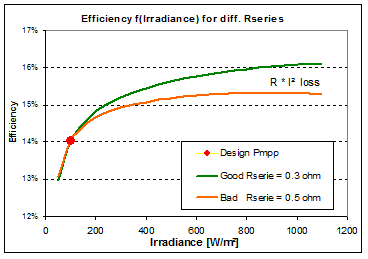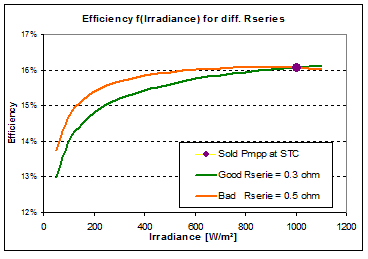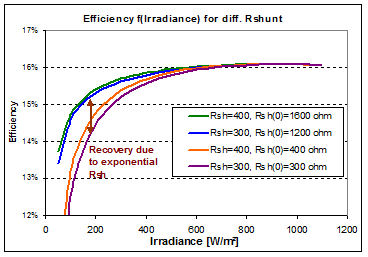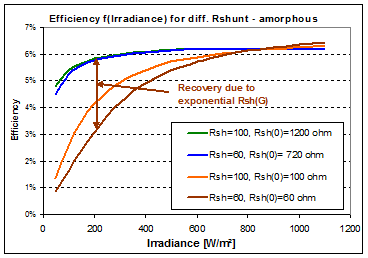|
<< Click to Display Table of Contents >> PV module - Rserie and Rshunt effects on Low-light efficiency |
  
|
|
<< Click to Display Table of Contents >> PV module - Rserie and Rshunt effects on Low-light efficiency |
  
|
The "Low-light efficiency" is mainly dependent on the Rserie and Rshunt (exponential behaviour) parameters (as well as di²MuTau for amorphous technology).
Rserie impact
The loss goes with the square of the current (Rs * I²), therefore increasing quadratically with power.
Take now a module designed for an irradiance under 100 W/m2: if the Rserie is high (bad), the losses are higher at high irradiances (orange curve).

Now the characteristics of the module you buy is specified at STC.
Therefore if you want to design a module of the same Power at STC as your "good" module, this new module with high Rseries should be globally of better quality at low irradiances:

Therefore a module with bad Rseries will give better low-light performances !
Rshunt impact
The shunt resistance at STC has a very low impact on the Low-light efficiency.
However the exponential behavior as function of the irradiance will decrease the Rshunt loss, and therefore enhance the efficiencies under 400 W/m².
The picture shows the case of a crystalline module, with a dynamics Rsh(0) / Rsh(STC) of 4.

However the amorphous modules have a much lower Rshunt at STC, and a much higher dynamic Rsh(0) / Rsh(STC) of around 12.
The figure shows that the efficiency difference would be significant between different Rshunt if they were constant. But the recovery of the exponential behavior leads to very similar curves.

Therefore the recovery of low-light efficiency is better with low Rshunts and high exponential dynamics.